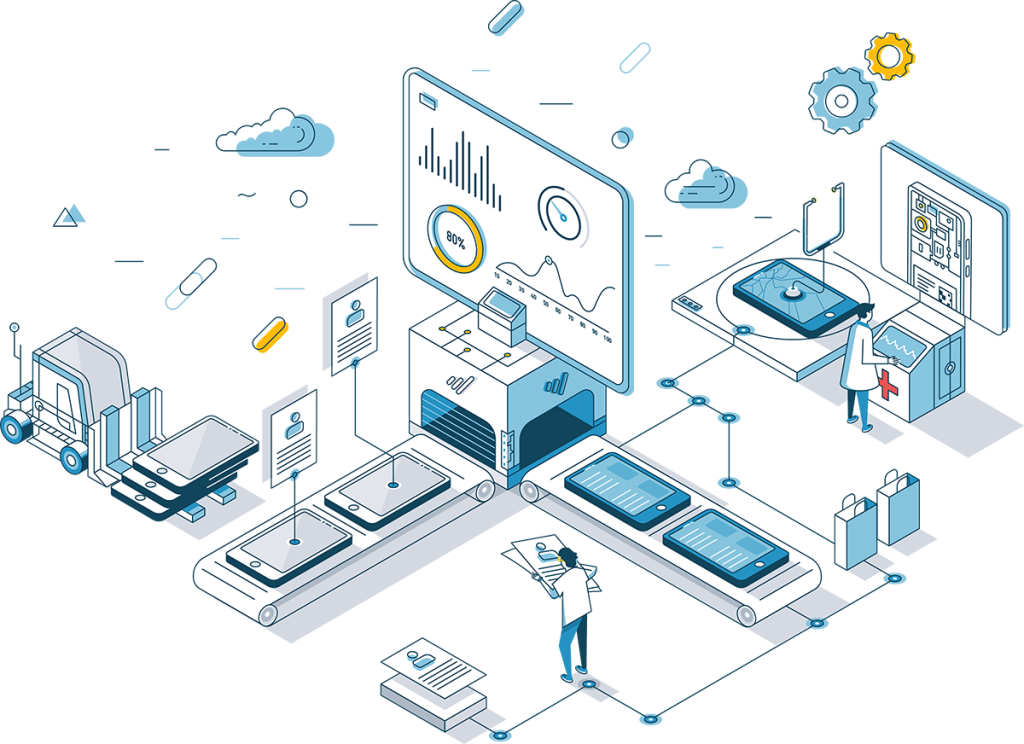In the rapidly changing workplace of today the method we use to manage and maintaining devices has been changed. The traditional method of distributing laptops at work is no longer feasible as we’ve shifted to remote and hybrid work arrangements. Instead a more intricate workflow called Device Lifecycle Management was introduced. Managed Desktop Service has emerged as a crucial component of this evolution, helping organizations streamline their processes and enhance the experience for users, increasing productivity.
Device Lifecycle Management is often called DLM and covers the complete process of a device’s lifecycle from its purchase until retirement. It includes a range of processes, including procurement of maintenance, provisioning and removal at the end life. While DLM was a once simple procedure in conventional office settings However, the advent of remote work has created layers of complexity and challenges.

In the new world IT managers have to deal by the demands of asset management and logistics every stage of a device’s lifecycle. The reason for this is the need to accommodate the various requirements of hybrid and remote workforces. Managed Desktop Service, a new service that has revolutionized the industry it has been a huge change for many companies.
Remote work enabled by Managed Desktop Services
Managed Desktop Services, also known as MDS is a complete management tool that makes it easier to manage the management of devices for end users. This service is an important asset to IT managers because it is a complete solution to manage device provisioning and maintenance. Here’s how Managed Desktop Service is helping organizations navigate the challenges of remote work:
Managed Desktop Service aims to improve user experiences for the end-user. It is designed to address common problems that remote workers encounter, such as delayed equipment installation, lengthy software updates along with the slow repair and replacement process. MDS increases job satisfaction and productivity by ensuring employees are able to access the resources and tools they require when required.
Streamlining Device Provisioning Managed Desktop Service simplifies the process of provisioning new devices to remote employees. With MDS, organizations can efficiently deploy laptops and other necessary equipment to new employees to ensure they are equipped with the tools they require from the first day. This eliminates the frustration of employees waiting for devices and slowing down the process of getting started.
Managed Desktop Service makes it easier for IT teams to patch and update software. It is possible to schedule updates for non-disruptive times, which means that employees are not inconvenienced while performing important tasks. This helps reduce the risk of interruptions for employees during meetings or video calls.
Rapid Repairs and Replacements In remote working environments, the timely repair or replacement of malfunctioning devices is crucial. Managed Desktop Service Providers often have robust support systems, which assure that employees receive prompt assistance when they encounter problems with their devices. This reduces downtime, it also minimizes the risk of cybersecurity threats caused by the use of private or unsecure devices in the event of an emergency.
Efficiency in cost: By outsourcing the management of devices for end users to a Managed Desktop service provider, organizations can optimize their expenses. This eliminates the necessity to hire employees in-house to manage devices, decreases disruptions resulting from outdated equipment, and improves the efficiency in managing the lifecycle of devices.
The impact of employee engagement on Turnover
Engagement and retention of employees are directly affected by a simple and effective lifecycle management of devices. Employees who feel frustrated caused by issues related to devices tend to become disengaged and even contemplate seeking opportunities elsewhere. Inefficient DLM can have a significant impact on employee engagement.
Businesses who invest in Managed Desktop Service, and a Device Lifecycle Management Strategy can provide a stimulating and enjoyable work environment. Employees who have access to the appropriate tools, experience fewer disruptions, and get prompt assistance when problems arise are more likely to remain with their employer of choice. This can help reduce unemployment and associated recruitment and training costs.
Cybersecurity threats: How do limit them
Organizations are putting cybersecurity as a top priorities in the current time of remote working. If employees aren’t using the correct devices management, they may use their personal devices or devices that are not secured, which can pose a serious risk to security of data and the network of the business.
Many managed desktop service providers employ security protocols that are robust and secure. They are able to ensure that all devices are equipped with the latest security patches and that data is encrypted and protected. This proactive approach helps companies minimize risks and keep safe remote working environments.
You can also read our conclusion.
The importance of Managed Desktop Service and Device Lifecycle Management cannot be overemphasized as the workplace landscape continues it’s evolution. These services are crucial in helping companies adapt their operations to hybrid or remote environments. By insisting on enhancing the end-user experience, streamlining device provisioning and enhancing security organisations can improve productivity, decrease turnover, and create a secure and enjoyable work environment in this new working environment. This isn’t just a response to the current times. It’s actually an important strategic move towards an improved competitive future.
